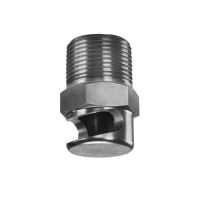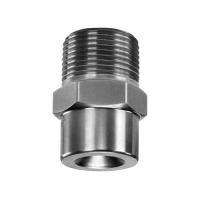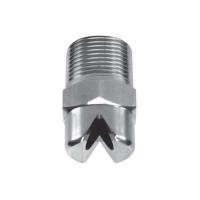We offer a large range of scrubber nozzles from BETE that remove contaminants from liquids, process gases, and equipment. Scrubber nozzles can remove:
- Sulphur oxides (SOx) from boiler exhaust in coal fired power plants
- Nitrous oxides (NOx) from combustion streams
- Acids from chemical processing off gases,
- Disinfectants from drinking water
- Particulates from process gas
- Odours from water treatment plants
Type of scrubber nozzles:
- Open scrubbers: Designed to spray the scrubbing liquid directly into the process stream. Open scrubbers depend on the correct droplet size and process conditions in order to maximize the reaction rate or mass transfer rate as these are usually dependent on surface area to volume ratio of the droplets.
- Packed scrubbers: These nozzles spray a scrubbing fluid over a packing material within a tower, which has an upward or horizontally flowing gas stream passing through the packing. The packing becomes saturated with the liquid and creates a film for the gas/liquid interaction to occur.
To learn more about which nozzle would be right for your application, read below or contact our experienced engineers.
Scrubbing applications:
Gas Scrubbing nozzle enquire
Gas Scrubbing nozzle enquire
Dry scrubbing
In dry scrubbing, a much smaller amount of scrubbing fluid is sprayed into the gas flow than in a corresponding wet scrubber system. The intent of a dry scrubbing system is to limit the volume of fluid injected so that the liquid component evaporates completely, leaving either a gaseous or solid component that will react with the contaminant and allow it to be removed from the system.
Flue gas desulphurisation (FGD) absorber nozzles
When fossil fuels are utilised in combustion processes to run boilers, furnaces, or other equipment they have the potential to release SO2 or SO3 as part of the exhaust gas. These sulphur oxides react easily with other elements to form harmful compound such as sulfuric acid and have the potential to negatively affect human health and the environment. Due to these potential effects, control of this compound in flue gases is an essential part of coal fired power plants and other industrial applications.
Packed Bed Distribution Nozzles
In packed bed scrubbers, scrubbing fluids are distributed over packing material in a column or vessel, creating a thin film of liquid on the packing. As the gas to be scrubbed passes upward through the packing material, it contacts the liquid film providing an opportunity for cooling and condensation or a chemical reaction to occur between the scrubbing liquid and the process gas.
NOx Removal (SCR/SNCR)
Nitrous oxides (NOx) are formed by combustion in high-temperature environments, such as power plants and large diesel engines. NOx causes air pollution by reacting with air in the presence of UV light from sunlight to form ozone, the primary component of smog. Therefore, it is crucial to limit NOx emissions in applications that produce large quantities of these gases.
Venturi Scrubbing Nozzles
A Venturi scrubber is a wet-scrubbing process that uses direct contact between the gas to be scrubbed and the liquid agent. It derives its name from and utilises the Venturi effect, in which a fluid increases its velocity as the area through which it is flowing decreases.
Wash Water Injection Nozzles
Wash water is injected into process lines in the refining, petrochemical, power generation, and chemical industries to wash contaminants from gas streams and piping components. This wash water process plays an important role in the process of refining crude oil into its component fractions.


















